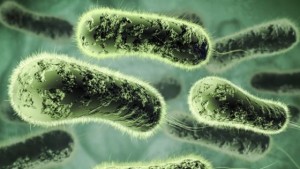Antibiotic resistance has potential to affect everyone. Most people would have heard about antibiotics resistance and show many are aware the cause of the current crisis is due to their overuse. But few know how and where the resistance occurs. Antibiotics resistance occurs when human body becomes resistant to the antibiotics. This isn’t entirely true. The resistance can happen inside our body as it is the host environment for a bacteria; but the important distinction is that the body’s immune system doesn’t change – it’s bacteria in our bodies that change.
What is antibiotic resistance?
Antibiotic resistance happen when bacteria change in a way that prevent the antibiotic from working. Changes in bacteria, known as resistance mechanisms, come in the different forms and can be shared between different bacteria, spreading the problem.
Bacteria and fungi naturally use the antibiotics as weapons to kill each other to compete for the space and food; they have been doing this for over billion years. This means they are used to coming into contact with the antibiotics in the environment and developing and sharing antibiotic resistance mechanisms.
Most antibiotics we use today are modelled on the ones naturally created by the bacteria and fungi. In past, if bacteria didn’t encounter the antibiotic they developed resistance for, they could lose the resistance mechanism. But now, because we are overusing antibiotics, the bacteria are encountering them all the time and therefore keeping their resistance mechanisms.
How bacteria block antibiotics from working
There are a number of ways that bacteria can resist antibiotics.
1) Cell entry – many antibiotics need to enter in bacteria to kill them. They use special holes on bacteria’s surface to do this but bacteria can close these holes or get rid of them completely.
2) Efflux pumps – bacteria can use these to pump the antibiotics out of themselves before drugs have had chance to work. Efflux pumps can be specific to one type of antibiotic or can pump out several different types.
3) Antibiotic degrading enzymes – these molecules are produced by the bacteria to degrade antibiotics so they no longer work.
4) Antibiotic altering enzymes – similar to the antibiotic degrading enzymes, these molecules change structure of the antibiotic so it no longer works against the bacteria.
5) Physical changes to antibiotic targets – different antibiotics target different structures inside bacteria. Bacteria are able to change their structures so they still function exactly as they did before but so antibiotic doesn’t recognize them.
These mechanisms can occur when bacteria are inside us, inside animals or out in the environment. This is why using antibiotics in the farming industry is such problem. The bacteria can become antibiotic-resistant in animals, and then they can pass into environment through things like manure.

